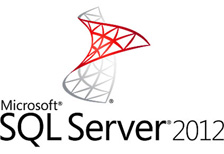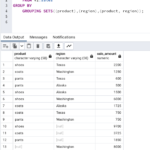 If you have wanted to try SQL Server 2012 and learn about its new features but have not had the time or capacity to set yourself up a test environment then go over to SQL Server Virtual Labs where you can fire up SQL Server 2012 in an instant.
If you have wanted to try SQL Server 2012 and learn about its new features but have not had the time or capacity to set yourself up a test environment then go over to SQL Server Virtual Labs where you can fire up SQL Server 2012 in an instant.
At the time of writing this post, there is no cost involved in running these labs. They don’t just cover SQL Server 2012, there are labs on SQL 2008 and business intelligence tools for you to try as well.
Whether you are going for SQL Server 2012 certification or wanting to learn about certain features related to SQL Server then these labs are a valuable resource. Not happy with something, then simply run the lab again and cut out any time required to set up what you wanted to cover. It’s also a great resource to come back to when you get close to sitting an exam. Labs can last up to 90 minutes.
There are three sections which a varied number of labs which you can try :
- Business Intelligence
- Mission-Critical Operations
- Database Management
Business Intelligence Labs
- Creating a PowerPivot Model and Report in the Excel Client
- Defining DAX Calculations with Microsoft PowerPivot for Excel 2010
- Creating a Report with Report Builder 3.0
- Exploring Power View
- Importing and Developing a BI Semantic Model in Microsoft Visual Studio
Mission-Critical Operations Labs
- Microsoft SQL Server 2008 R2: Database Mirroring
- SQL Server 2012: AlwaysOn Availability Groups
Database Management Labs
- Microsoft SQL Server 2008 R2: Database Mirroring
- SQL Server 2012: AlwaysOn Availability Groups
- SQL Upgrade: Upgrading to Microsoft SQL Server 2008
- SQL Server 2012 – Working with Contained Databases
- SQL Server 2012 – What’s new in Manageability
- SQL Server 2012 – Installation and Configuration
- SQL Server 2012 – Security and Compliance
- SQL Server 2012 – Upgrading to SQL Server 2012
- SQL Server 2012 – What’s new in T-SQL
- SQL Server 2012 – Installing and managing SQL Server 2012 on Windows Server Core
- SQL Server 2012 – What’s new in Data warehousing and EIM
Click the link and check out SQL Server Virtual Labs


Leave a Reply